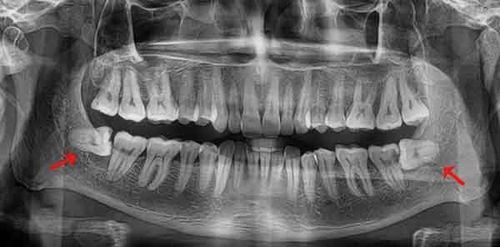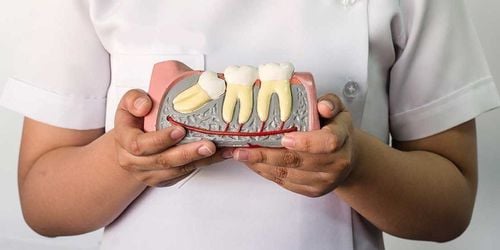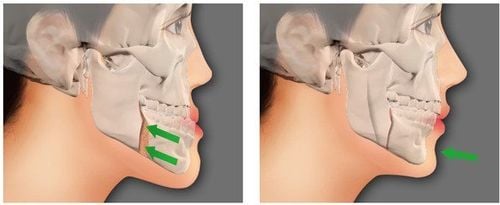This is an automatically translated article.
The article was written by the Doctor in charge of the Dental - Jaw - Facial Unit - Interdisciplinary Department - Vinmec Times City International General Hospital.
Permanent molars usually erupt from the age of six onwards, while wisdom teeth (third molars) are the last to erupt, usually between the ages of eighteen and twenty-four. Wisdom teeth can grow normally into the correct position and have the correct dental function, or conversely they can grow in the wrong positions, with no or very little function.
1. What is a misaligned wisdom tooth?
An erupting wisdom tooth occurs when there is a barrier to eruption due to lack of space, blockage or growing in an abnormal position. This can lead to partially or completely impacted teeth, the common English noun is “impacted”. Crooked teeth often lead to conditions including inflammation of the pocket around the crown of the wisdom tooth, an increased risk of tooth decay and periodontal disease in adjacent teeth, and orthodontic problems in later life.
Many people are quick to assume that when a wisdom tooth is impacted, it means they need surgery to remove it immediately. This will be decided more accurately when you have a basic and simple understanding of some common types of wisdom teeth and the risk factors depending on the growth patterns of the teeth.
There are four common types of impacted wisdom teeth, and depending on the type you experience, may or may not require surgical removal of them.
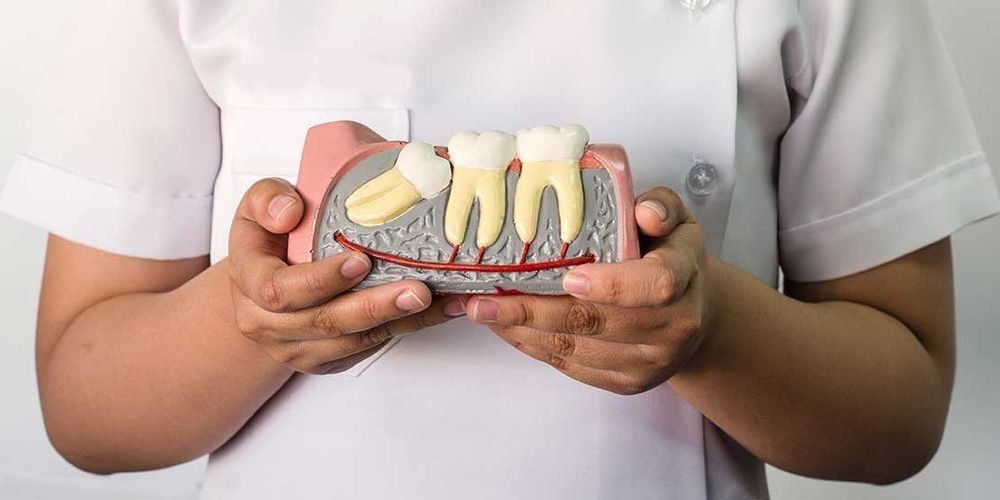
Tùy vào tình hình mọc lệch của răng khôn để có phương án điều trị thích hợp
2. Four common types of misaligned wisdom teeth
2.1 Wisdom teeth growing vertically Vertical wisdom teeth rarely require extraction because that is a near-normal orientation. The tooth lies in an almost vertical direction. There is a very high chance that they will grow completely and without any problems.When it is necessary to remove it, it is usually because this impacted wisdom tooth causes pressure on the underside of the adjacent molar in front or with the bone at the back in the mouth. Vertically impacted wisdom teeth are usually extracted using only local anesthesia. Intravenous anesthesia will only be required in cases where the patient is extremely anxious.
2.2 Proximal deviated wisdom teeth Proximal deviated wisdom teeth are the most common, in which the axis of the tooth is tilted forward pushing against the adjacent adjacent molars (number teeth). The angle of misalignment of the teeth determines whether it becomes a problem or not.
This direction of growth often leads to partial eruption of teeth. In many cases, these misaligned wisdom teeth are monitored periodically because they can also erupt properly after a while.
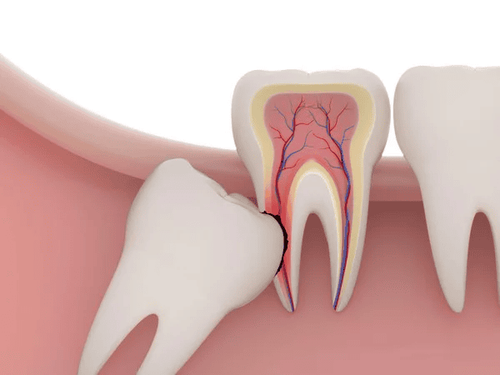
Răng khôn mọc nghiêng và đẩy vào răng hàm liền kề phía trước
2.3. Displaced wisdom teeth This is the least common type of misalignment of the four and is in stark contrast to the mesial type, which is tilted toward the back of the mouth (distal slant). The requirement for tooth extraction will depend on the degree of misalignment of the tooth.
If the tooth is tilted at an angle close to zero degrees, it will grow as normal; but usually it will always have a slight bias. Your dentist or oral surgeon usually advises you to wait 1 to 2 years to determine whether to remove it.
If the distal tilt angle is close to 90 degrees or 90 degrees, there is a high chance that it will eventually hit the bone and not fully grow. In this case, your oral surgeon will determine whether or not the tooth should be extracted. Depending on the severity of the entrapment, intravenous anesthesia or even general anesthesia may be required for surgical removal.
2.4. Horizontal eruption (90 degrees deviation) Wisdom teeth that erupt at 90 degrees are the worst and most painful. The wisdom teeth are horizontal, completely hidden away from the upper surface and collide with the adjacent anterior molars (teeth 7). Only an x-ray can properly determine your horizontal wisdom tooth, and removal requires a qualified and skilled oral surgeon.
A wisdom tooth that grows horizontally parallel to the jawbone without removing it can damage the surrounding teeth. Extracting this type of impacted tooth can result in some bone being removed, so the most commonly performed procedure is general anesthesia or intravenous sedation. After the extraction, most patients will need a prescription for pain medication and possibly antibiotics to reduce the risk of complications during the healing process.
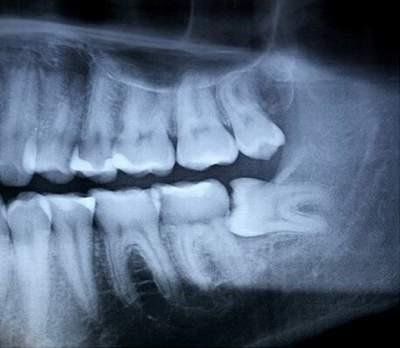
Phim chụp răng khôn mọc nằm ngang 90 độ
Surgical extraction of wisdom teeth is a routine technique at Vinmec International General Hospital. The advantage of wisdom tooth extraction technique at Vinmec is to avoid complications of tooth number 8 such as pain, adjacent tooth decay, inflammation, trauma to tooth number 7.
Especially, specialized in Dentistry - jaw - face , Vinmec hospital is equipped with KAVO dental chair system (Germany), dental chair camera, Gendex panorama machine, in situ dental X-ray machine, Gendex Phosphorus film scanner, Dently ultrasound machine, forging and bleaching Radii Plus Australia teeth whitening, endodontic machine, root canal length meter.... help maximize the examination and implementation of all dental and maxillofacial techniques. In addition, Vinmec Hospital has a team of experts, leading doctors with high qualifications, experience, dedication and devotion to the health of patients. Always choose the best treatment method for the patient.
To register for examination and treatment at Vinmec International General Hospital, you can contact the nationwide Vinmec Health System Hotline, or register online HERE.




